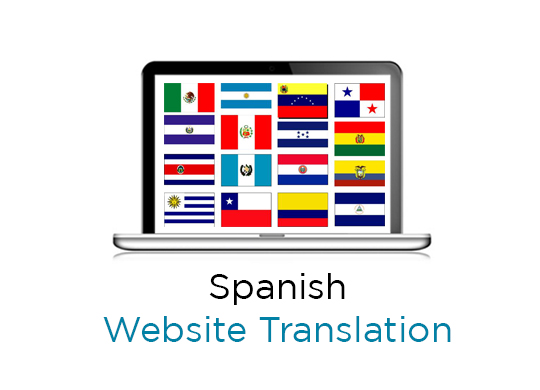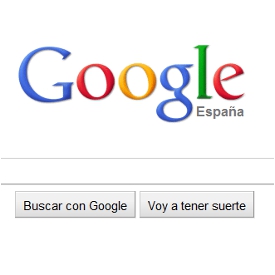Spanish Website Translation Basics
As a native Spanish speaker from Argentina working as a language professional in the localization industry for more than 7 years, many times I’ve experienced the challenges of providing high quality website localization services in Spanish. The key for success in my opinion is really knowing your target market. Having an excellent team of translators and editors is extremely important; however, you are not only supposed to translate but also to “localize” (adapt) the source text for the foreign markets taking the cultural differences into account during the translation process. For example, if the target audience of my Spanish website is Latin America, I should not translate into Spanish for Spain, even though the text would be understood by the readers. If the target audience is Latin America, Mexico and Spain, perhaps I should use a neutral Spanish locale for translation.

Spanish Speakers Online
As I said, understanding the market and audience for your website is critical. For instance my home country is Argentina. Located in the southern extreme of the American Continent, the Argentine Republic is a beautiful country between the mountains of the Andes and the Atlantic Ocean. Argentina has approximately 40,000,000 inhabitants, of which about 39,500,000 (98.8% of the population) are native Spanish speakers. Most Argentines are of European descent, especially Spanish and Italian. Substantial numbers also came from France, Poland, Russia and Germany.
There were 28,000,000 internet users in Argentina (representing 67.0% of the population) in December 2011, according to Internet World Stats (Internet World Stats, April 2012). Internet adoption reached 54.3% in Argentina in 2012, according to eMarketer. The level is expected to reach 68.0% by 2016.
This information may be helpful when determining my investment, type of Spanish used and even the features for a Spanish version of my website.
The Spanish Language
Spanish (español) is a Romance language that originated in Spain. It is one of the six official languages of the United Nations and is used as an official language by the European Union and Mercosur. It evolved from several dialects of spoken Latin in central-northern Iberia and continues to adopt foreign words from a variety of other languages. Spanish is the most popular second language learned by native speakers in the United States as well as in many other countries, becoming the second language in international communication, after English.
Spanish Website Translation Basic Steps
There are a series of fundamental steps that need to be completed in order to translate or localize a website for Spanish speaking target audiences.
1. Building a glossary: Key terminology is identified and extracted from the source files provided by the client. Upon client approval of the source terminology, it is translated and provided back to the client for review and approval. After that, the terminology is imported into a translation memory tool and updated as needed.
2. Translation and copy writing: A professional translation service includes the accurate translation of the source text into the target language, editing of the text by a separate translation team and final proofreading by a native speaker. In order to stay true to the source content, many times this can result in translations that are more literal. Copywriting or trans-creation is required in projects that involve marketing or persuasive content, where the translated text must be then rewritten to make the message persuasive, as well as accurate and culturally appropriate. In some cases, a target language locale may be so different that a complete rewrite of source marketing text is required.
Make sure content is culturally correct by considering:
- Local customs
- Local content
- Morality
- Symbols
- Cultural values and social context
- Not only to translate but also “localize” (adapt) for the foreign markets
- Cultural differences
- Colors have different meanings in different countries (e.g. white means holy in the US and mourning in China)
- Cultural references or examples must be adapted to the target language or country
- Images: issues of comprehensibility and cultural appropriateness (e.g. sports represented by a football image in Argentina and a baseball image in the US)
3. Localizing of graphics: Graphics are updated by extracting translatable text from source graphics, translating that text in the target language, and finally placing the text back into the new “translated” graphic.
<4. Online QA: On Website localization projects, it’s essential to have language professionals examine a localized website in context ensuring all linguistic and cosmetic items are correct and the application or site works properly for the target users. Proper platforms, browsers, and test scripts are used to ensure the experience of the target user will be as good as if the application was developed specifically for that market.
Note: Today most websites utilize a Content Management System: There are different types of multilingual web content management solutions that support the Spanish Language and website localization, including:
There are many benefits for using a web cms to author, store and publish your content, especially for sites in various languages. Having a CMS-based solution for multilingual websites reduces the number of people who handle content, limits the webmaster involvement and technical expertise required by authors or translation company linguists who need to use the system. Web content management systems can significantly lower costs throughout the website translation process. For more information on multilingual CMS, please check our blog Website Localization and CMS.

Spanish Website Search Engine Optimization (SEO) Basic Steps
Your website content cannot be “found” by the majority of Spanish-speaking users unless your website is localized in Spanish and optimized for search in the Spanish language. In today’s competitive online market, you need to know how important good Spanish search engine optimization is and what are the main factors to achieve this.
Search Engine Marketing Services may include:
- Comprehensive Spanish website translation and localization
- Multilingual keyword phrase research, refinement and localization
- Multilingual Search Engine Optimization and copywriting of main site content
- Multilingual Search Engine Optimization of meta-tags, titles, alt-tags, heading tags, HTML, etc.
- Submissions to major locale (in-country) and international Search Engines
- Website traffic and keywords ranking reporting
- Pay-Per-Click (PPC) campaign content localization
- Pay-Per-Click (PPC) country-specific campaign management
U.S. Hispanic SEO
When localizing your U.S. Hispanic website, it is important to research cultural and linguistic issues specific to domestic Latino consumers. Keyword list localization is a very different process from standard Spanish translation; you should make sure that the agencies you work with to handle global SEO have the experience and understand the requirements for performing this service so that they can provide you with appropriate Spanish keyword localization. This will ensure that your Spanish website localization optimizes your content for U.S. Hispanic search engines to produce maximum results.
